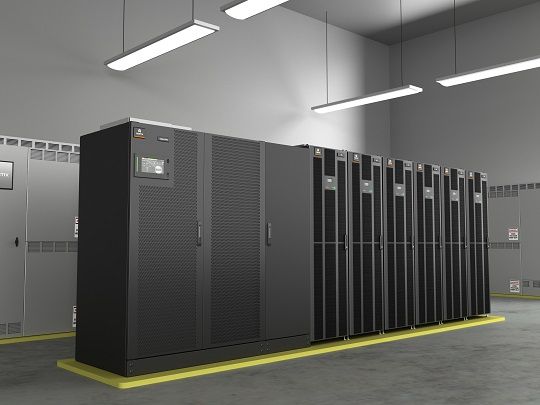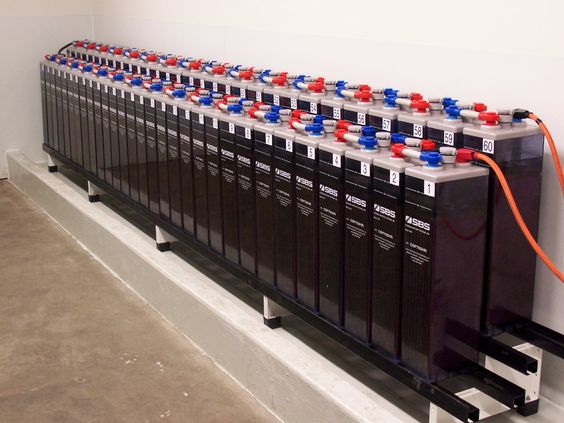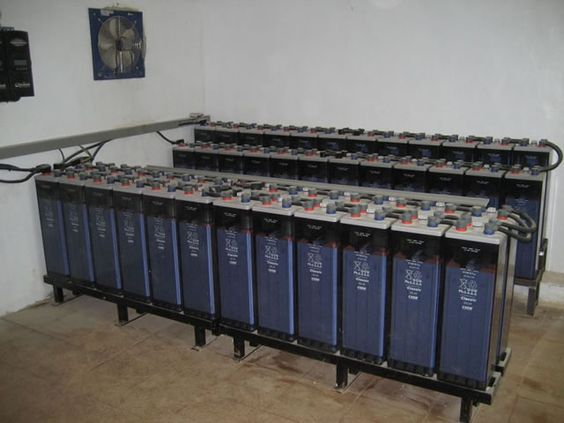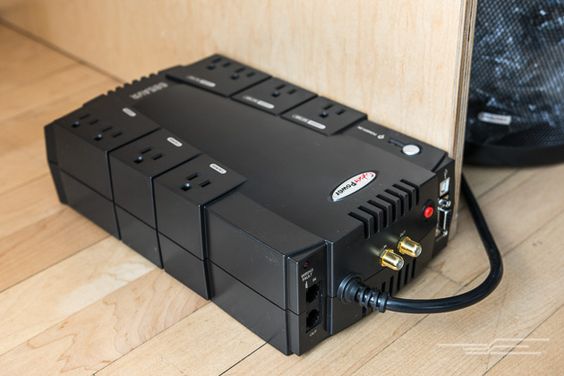source:Geerady date: 2021-12-22
[caption id="" align="alignnone" width="540"] Battery Cabinet[/caption]
Battery Cabinet[/caption]
Batteries have been part of the day-to-day life of man from the day he discovered electricity. Over the years, people have tried to find ways to store electricity, and the best option so far has come in the form of batteries. These have further evolved into many types that have been used to power all kinds of machines and devices. From cars, generators, heavy machinery to small devices like smartphones, radios, watches, and the likes.
Our focus today will be on rack batteries. We will look at what they are, how they operate, the features that make them unique and useful, among other important information. So if you have been curious to know about rack batteries, then you have come to the right place. Stick with me to the end to get some enlightenment on what rack batteries are all about.
What Is a Battery Rack?
[caption id="" align="alignnone" width="564"] A Battery Rack[/caption]
A Battery Rack[/caption]
A regular battery is used to store electric power for later use or to be used in a mobile machine. Just like the raw form of electricity, it cannot be left exposed. It requires certain chemicals and special materials that should never come into contact with people and other things at the risk of injury or contamination. For this reason, they have to be enclosed in structures called racks.
Battery racks, therefore, are enclosures that are used to accommodate the battery cell alongside any other material that is necessary for the battery to work as a whole. There are even components inside the battery that are not supposed to even mix, and this is why battery racks are very important.
Types of Battery Racks
[caption id="" align="alignnone" width="564"] Backup Power Supply[/caption]
Backup Power Supply[/caption]
Battery racks come in varying types depending on the task and the device they are designed for. The following are some of the most common types of battery racks that you can find in the market today.
Standard Battery Racks
These are racks that have been designed for stationary battery models. They are constructed with easy-to-use racks that are strong, acid-proof, and flexible, meaning they are highly efficient in holding batteries in place for use. Each rack is coated with rubberized coating along with the runners, can be easily bolted, and at the same time, they leave room for quick alterations, and they allow for the retrofitting and removal of spill containment systems.
Seismic Battery Racks
These are strong and stable battery racks that are designed to counter any form of shock, even those that come from mild earthquakes. They work best in earthquake-prone areas, and some of the common features you should expect to see here include adjustable racks that are biotin custom-designed and have the ability to accommodate different batteries from different brands.
Relay Racks
Relay racks are types of battery racks that can be arranged in the form of towers that can then accommodate batteries on either side. This increases the power output as they can all be connected with each other to form one system powering a machine.
What Are Rack Mountable UPS?
[caption id="" align="alignnone" width="624"] Battery Rack[/caption]
Battery Rack[/caption]
There are usually two main types of uninterrupted power system that are used to keep servers running even when the electricity goes out. This ensures that the servers keep running until power comes back.
A rack mountable UPS is basically a rack made of metal or other materials that provides a place where batteries can be slotted in. Unlike tower UPS, a rack-mountable UPS can be placed anywhere. The following is a quick look at some of the main features of rack-mounted UPSs.
They provide an uninterrupted supply of power to servers, hardware, data storage devices, and this ensures proper and continued functioning of all electronic equipment even when the power goes off.
It supplies immediate power to any of the connected devices without causing any lag. This quick action is very vital in workspaces that need to run 24/7 without any interruptions. Places that experience regular power outages need to heavily invest in reliable UPS systems if they want to continue being helpful.
They offer what is called Automatic Voltage Regulation (VAR). This helps the connected devices to keep receiving consistent and clean power to help them function as they should.
They assist in the cooling of hardware components placed on the rack. This optimizes the devices that require this to stay functioning in the most extreme situations.
Some of the advantages you can get from using rack-mountable UPS include the following:
Easy to Maintain and Expand
When you are dealing with multiple servers, and you need everything to work in the most efficient way, the rack-mountable UPS systems are what you should be going for because they are not just easy to install, but maintenance is a walk in the park too.
Unlike other options where you have to deal with power lines running all around, monitors, keyboard, servers, routers, devices, and others, everything in rack-mounted UPS comes inside a cabinet; this means you have less need to deal with cables, dust, and other issues that are common with server rooms. This is a clean and safe way of setting up batteries.
High-Security
Rack-mounted UPS offers better security and protection from physical damage, data leakage, and vandalism. Since the battery comes stored inside a cabinet, you get the chance to store and lock it with a key or a password combination like a real safe. Anyone without he authorization cannot gain access to the batteries or anything else locked inside.
Parallel Redundancy
These racks give you a stable operation with high reliability without any redundancy. Once they go operational, they keep running without any issue unless they are physically damaged, or they reach the end of their lifespan. You are always assured of getting a decent number of years before you start thinking of replacements.
Saves on Space
A rack-mounted UPS packs more battery cells as far as storage is concerned more than the other options. Since everything is squeezed into a cabinet, you will not have any loose wires or cables hanging around; this saves on space and makes the whole spade safe to work around without tripping on anything.
Does this rack have any drawbacks? A few of them, the most notable one being the cost of setting it up. The use of cabinets that provide more security comes at an added cost, and this reflects on the final price. It also fits fewer devices and batteries compared to another option like the tower UPS, so this would not be ideal for anyone looking to set up a large server room.
Overall, a rack-mountable rack is for people who need a clean and neat machine room with a higher environment. Otherwise, you will be better off just going with a tower UPS or any other option available.
How and Where Can You Use Rack UPS?
[caption id="" align="alignnone" width="564"] Regular Lithium Battery[/caption]
Regular Lithium Battery[/caption]
There are many applications that one can utilize rack mounted UPSs for. The most notable ones being servers. There are many other roles and places where these structures come in handy, and the following are just some of the ones we feel are worth your attention.
In workplaces that require a continuous supply of power for computers and other peripheral devices. This means places like hospitals that must never run of power and also server rooms that are home to important websites that run vital services.
In institutions that run entire network systems relied upon by many services that cannot afford to go offline even for a single minute.
In telephony, companies have to be active all through to keep taking emergency lines even when there’s a power outage. This ensures services are not interrupted at any point in time.
Factors to Consider When Installing a Rack Mounted UPS
[caption id="" align="alignnone" width="564"] A Row of Batteries[/caption]
A Row of Batteries[/caption]
The following are some factors you need to keep in mind if you are planning to install a rack mounted UPS.
The number and size of server racks. Every rack can accommodate a certain number and sizes of batteries, and this should give you a good idea of how big the rack should be. Make it too big, and it will be loose, make it too small, and it will not fit everything.
The UPS topology: This can either be online UPS or line-interactive. The former is preferred due to a better design that can fit into most standard racks.
The UPS battery times will help you figure out the size of the rack. In places where the power outages are longer, bigger batteries will be needed, and this, in turn, will need bigger racks.
Quality and Service Life
[caption id="" align="alignnone" width="564"] Well Organized Rack Batteries[/caption]
Well Organized Rack Batteries[/caption]
So how good is the quality and service life of a standard rack battery? How long should you use it before you start thinking of replacements? Does it need to be checked out regularly? These are the questions we are going to answer in the following section.
How Safe Are Rack Batteries?
Rack batteries, just like most electronic devices used to store power, are not 100% safe. Accidents and malfunctioning can happen, and this doesn’t have to be caused by human errors. However, compared to other options, they are a lot safer, and you need to have them installed for the following reasons.
By placing the batteries in a designated area, you can seal that area off to avoid any tampering, and this makes the working environment safe.
It is a good and neat way of ensuring that the workspace complies with all the needed safety regulations.
They are a better way of battery management. You are able to better track how the batteries are used and all the connections that go in and out of them.
It is a more efficient way of using lab space more efficiently, and this leaves, you with all the space you need to move around without having to trip over wires and anything on the floor.
How Long Will a Rack-mountable UPS Last?
[caption id="" align="alignnone" width="450"] A UPS[/caption]
A UPS[/caption]
The average lifespan of a rack-mountable UPS is about 3-5 years. There are many factors at play here and some of the things you can do to ensure optimum longevity include the following:
Ensure an operating temperature of between 68-77 degrees F. Higher temperatures are not good for the rack batteries. Every rise of about 8 degrees centigrade has the potential to cut the battery life in half.
Calibrate the battery at least twice every year and ensure the rack battery never completely discharges. The main aim here is to have them always ready for an emergency.
Ensure you use the batteries that have not been stored for too long. The recommended limit is six months from the date of shipping from the factory. Extended storage of rack batteries without use is not good for their longevity.
Smart UPS
[caption id="" align="alignnone" width="450"] Smart UPS[/caption]
Smart UPS[/caption]
A Smart UPS is an advanced form of an uninterruptible power supply that doesn’t need any human intervention to get things running. It is the kind that kicks into action the moment the main power is interrupted to the point where the devices simply continue functioning without skipping a beat.
How Does a Smart Ups Work?
A smart UPS works by taking over the power supply roles in the event of a power outage from the main power grid. Unlike other types of UPSs, this one automatically kicks in to ensure the lag times are as minimal as possible. This is a huge advantage, especially when you need to keep important machines like servers that should never go down for too long.
What Size UPS Do I Need for My Server?
[caption id="" align="alignnone" width="564"] Server Room[/caption]
Server Room[/caption]
The size of the UPS you go for depends on various factors and features. The following are the tools and options that you can use to size up the UPS for your server needs.
Check the power needs for your server. Bigger servers require bigger UPSs and vice versa. The last thing you want is to connect a small UPS that is unable to sufficiently distribute power to all the servers hooked to it.
The space available: You can only fit what the available space allows. If your servers need bigger UPSs and you don't have the space for it, then you may have to either find a bigger space or reduce the number of servers to meet the capabilities of the UPS in question.
The number of servers is another big indicator that should help you figure out the size of the UPS needed to run them efficiently. Remember, the UPS takes the role of supplying power to the servers once the regular power is interrupted, so it has to match the same level of power.
What Are the Two UPS Configurations for the Rack System?
[caption id="" align="alignnone" width="564"] A Regular UPS[/caption]
A Regular UPS[/caption]
The two main types of UPS systems configurations include online double conversion and line interactive.
Online double conversion is a more stable version but can be prone to sudden sags, spikes, or even complete failures that could interrupt operations. Line interactive, on the other hand, goes an extra step to provide a battery backup and power conditioning. It is highly efficient in areas with rare power outages but a high risk of fluctuations.
Can You Mount a UPS Vertically?
Yes. You can mount a UPS vertically, but not all of them are designed for this kind of arrangement. The style you choose to mount the UPS must adhere to the same safety rules, with the most important one being the creation of enough space between the batteries in the rack to avoid blocking airways for good ventilation. Too much heat is not good for the battery, and you should always find a way to minimize that.
Conclusion
A good battery rack will go a long way in ensuring that you are operating in a well-organized environment. This is good for overall productivity as it ensures high efficiency even when the main power supply is interrupted. There is a lot more information on battery racks than we can fit in here, but that doesn’t mean we cannot provide you with the help you need. Feel free to get in touch with us if you have any questions or concerns, and we will be more than happy to answer you to the best of our abilities.










